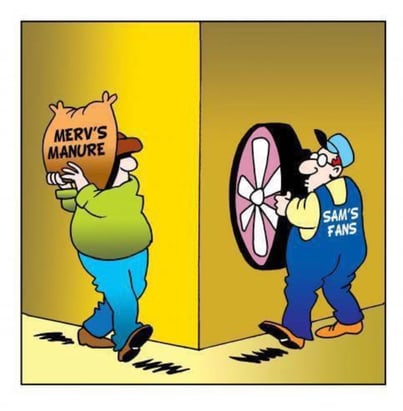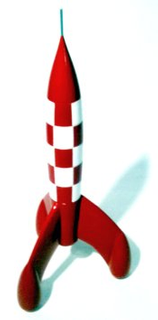 In these crazy times, there is a lot that can be discussed about leadership.
In these crazy times, there is a lot that can be discussed about leadership.
What are the trends we see in leadership decision making?
Three observations, one scary and two upbeat.
Thought One - A personal observation
My good friend Doug sent me the above image. I think it describes this moment in time well. I feel some parts of the Americas are moving forward with some significantly dangerous ill-thought-out plans. We have done some excellent work to date, but it is still early in understanding what we are trying to navigate. Rushing to "get back to normal" now can undo a lot of effort to date and have a harmful impact. Besides the normal as we knew it is in the past.
Like all good business decisions, we need a clear understanding of what we are dealing with today and perhaps look at some "best of class" methodologies to use going forward. Leaders need to resource accurate information, which means "getting out of the castle." In regards to Covid-19, we have lots of data to work with going back to the Spanish Flu and many other events in between. Evidence-based science states we have a reasonably clear understanding of how the second wave of a pandemic can work, it will happen—some basic premises. So why don't we build that into our new strategy?
- Covid-19 is not like the Flu and will not subside in the summer.
- We do not have a vaccine yet. (i.e. even New York still has a possible 75% of the populations that could be infected)
- The ease of the Covid-19 virus spreading is astounding, and we are still learning. Look up the notion of "super spreaders," add this to the fact that a significant percentage of the infected population is asymptomatic. And people are gathering in large groups to protest the shutdown. We have a ways to go.
What is the rush? I know these are hard times economically, but we know that human suffering and significant loss of life will impact the economy a lot worse if we don't exercise some caution on how we move forward. They are not unconnected systems. If our employees feel we are putting them in harm's way, we will significantly degrade trust in the organization. And there is a considerable upside if we do it right, which leads me to the next two points.
Thought Two - The New Normal - Lots of options
The notion of the "New Normal" is becoming reasonably socialized, but it is interesting how people are dealing with it. I sit on a group of Executive Coaches from around the world on a weekly call, and one of the main talking points is that it is challenging to get Senior Leadership to slow down and reflect instead of just making decisions quickly. I like the quote of Abraham Lincoln about "the best way to predict the future is to invent it," but ok, maybe we should try to stop "looking like a leader," ease the pressure on our people, slow down and do some quality thinking about it. The rate of change in business has been accelerating for a few decades now. In some respects, the pandemic could be viewed as just an exceptionally fast and extensive volley of change. So maybe not just barking orders is the answer? Design thinking has taught us some effective processes. We should use them. Rosabeth Moss-Kanter has some great quotes in her many books on leadership, including. "Team up, fail well, learn fast."
Get the group involved, reiterate ideas extensively and look for options through many lenses. Take a moment to ponder them. You probably have the time to gestate on the ideas instead of immediately executing them. We are still in lockdown. Be creative and push for lots of ideas. What would be the safest idea? The boldest? The most expensive? The easiest? The most difficult? The question "What do you feel comfortable doing?" is an excellent conversation with a team. Maybe you have been overly habitual with the status quo in the past, time to change? Question everything.
"It takes as much time to dream small as it does to dream big."
Dream bigger than you are. Working multiple scenarios will give you a better answer. When you start to implement the plan, tweak and reiterate (without blame) as necessary. Pilots on long journeys always course-correct along the way, and it is the same for big projects. And as the boss, you do not have to come up with all the answers. Push it out to the organization, maybe even the entire organization.
"Go on a treasure hunt, for the genius of your team" Rosabeth Moss-Kanter
It will be a beautiful distraction from the daily news and help drive engagement. People adopt what they feel they helped create. We also know that showing some vulnerability as a leader and asking for views, will also encourage commitment and trust. And you might have some very innovative ideas come forward. Now is a time to be gentle with the organization and "be a team." People have enough anxiety as it is. This event is not a sprint, play the long game.
But do plan on making changes. Ignoring what is going on and "seeing what happens" will bring significant risk to your success and diminish all chances of innovation in the new world that we know will be different. Remember, "If you don't like change, you are going to like irrelevance even less."
Thought Three - Running towards something is better than running away from something.
Develop an image of what you feel the future state could be. A vision is different from having a "recovery plan." Most organizations should throw out the name "recovery plan." The very best you could hope for is getting back to the status quo. "Great, we recovered," wouldn't you want to aspire to something better?
There can be a significant upside to having a new, more visionary strategy. Remember, a considerable percentage of the Fortune 100 companies around today were born out of downturns in past markets.
There is even an upside to the mental health of your organization. Richard Boyatzis talks of neurological research that tells us that the only time the brain is in recovery mode from stress (i.e. from being in a pandemic) is when the mind can envision a goal. This recovery and growth are what we feel when we have the perception of inspiration for something we are striving to attain that we can picture. We often talk to it as "hope." But we all know the feeling inside we get when we are part of an inspiring vision. That feeling is chemical in our physiology, and it is good for our mental health. To be effective, the concept does have to be well thought out and viable. That will take effort and teamwork. Make sure you hold the course. Remember, "everything can look like a failure in the middle." Have courage, get to the other side, it will be rewarding. Taking the effort to have a clearly articulated vision in and across an organization means engagement, passion, energy, resiliency and often significant successes in growth, financials, and making a substantial difference with your customers.
In times of stress, one of the first things we often lose in our demeanour is empathy. Try to be aware of this as a leader and ratchet up your EQ in these quickly changing times. It will pay you back many dividends.
So pause, take ten deep breaths. Look around, stop advice-giving a tiny bit and exploit the power of your team. Remember, the smartest person in the room is "the room," you don't have to have all of the answers. Do a lot of reiteration while it is still on paper and be open to changes when implementing.
You will be considered an inspiring leader during these challenging times, and you might see an upside that could eclipse just pure efficiency or recovery plans.
A final thought on human risk in these challenging times. Spreadsheets are for numbers, and organizational charts/jobs are for people. We shouldn't mix them up. Let's be accurate with the first ones and careful with the second ones.
Leadership is a responsibility.
But it doesn't have to be rocket science,
Take care,
Kevin Dunal
A few good books in this space;
Renee Mauborgne - Blue Ocean Shift & Blue Ocean Strategy
They have a good newsletter too.
Rosabeth Moss-Kanter - Thinking Outside the Building
